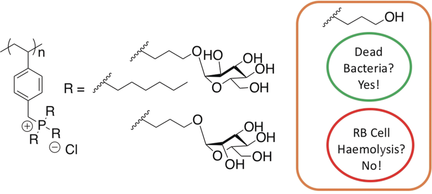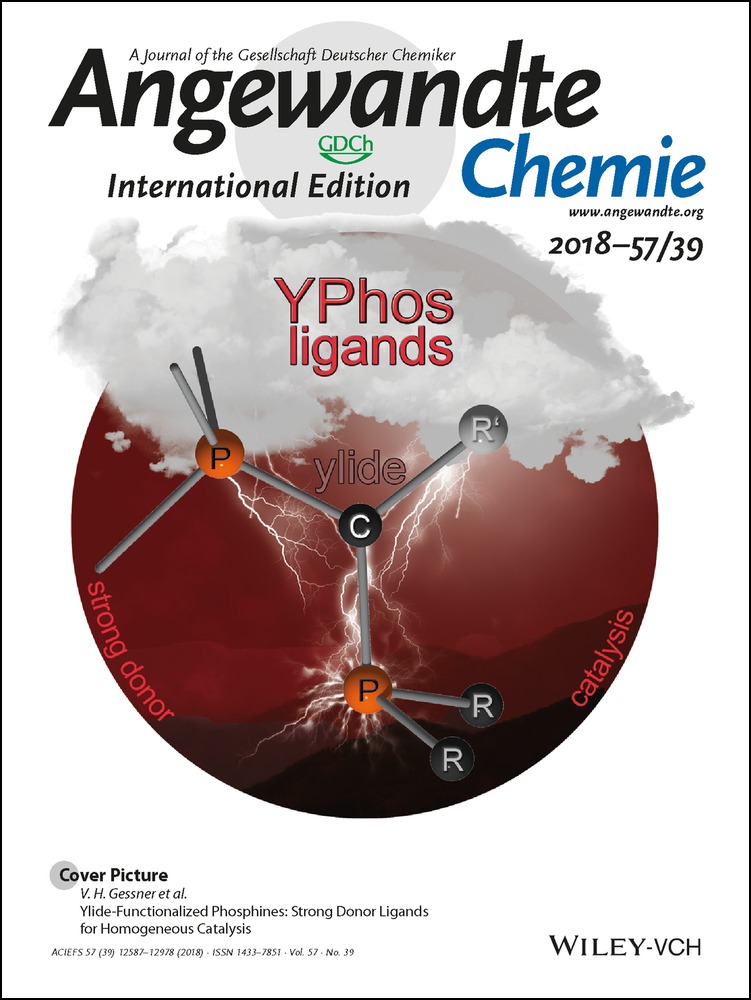Surprising Antibacterial Activity and Selectivity of Hydrophilic Polyphosphoniums Featuring Sugar and Hydroxy Substituents
Graphical Abstract
Sweet but deadly: Phosphonium-based polymers appended with hydrophilic groups such as sugars or hydroxy groups can be employed as highly effective antibacterial agents against both Gram-negative and Gram-positive bacteria with minimal haemolysis of red blood cells. This challenges the conventional wisdom that hydrophobic appendages are necessary for this class of biocides.
Abstract
There is currently an urgent need for the development of new antibacterial agents to combat the spread of antibiotic-resistant bacteria. We explored the synthesis and antibacterial activities of novel, sugar-functionalized phosphonium polymers. While these compounds exhibited antibacterial activity, we unexpectedly found that the control polymer poly(tris(hydroxypropyl)vinylbenzylphosphonium chloride) showed very high activity against both Gram-negative Escherichia coli and Gram-positive Staphylococcus aureus and very low haemolytic activity against red blood cells. These results challenge the conventional wisdom in the field that lipophilic alkyl substituents are required for high antibacterial activity and opens prospects for new classes of antibacterial polymers.





